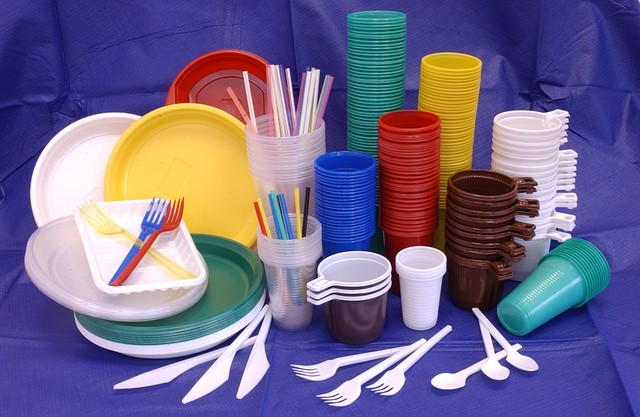Single-use plastics are meant for one time use and throw. They are disposable plastics. It causes a major impact on the environment as plastics are non-biodegradable and thus it always remains in the environment, contributing to pollution.
They include polythene bags, plastic drinking bottles, plastic bottle caps, food wrappers, plastic sachets, plastic wrappers, straws, stirrers and Styrofoam cups or plates. It takes hundreds of years for plastics to decompose and thereby contributing to land and water pollution easily.
Impact on the environment:
As mentioned above these take hundreds of years to decompose as time goes the plastics would break into small pieces of plastics called microplastics. Microplastics can further interact with soil fauna, affecting its health and function which results in the release of toxic chemicals in the soil and as well into the water bodies, which in turn it makes its way to reach food and water supply as most of the plastics end up in landfills, oceans, waterways and environment.
The toxic chemical which is used to produce plastic thereby enters animal tissue and eventually enters the human food chain.
Styrofoam is a plastic which is used in making coffee cups, food containers and as cushioning material in packaging. These Styrofoam products are toxic if ingested and damages the lungs, nervous system and reproductive organs.
At beaches, litter of food wrappers and plastic bottles are left behind by the beach goers. Commercial trash which is not properly disposed eventually reach the beaches especially during the rains or a storm where it washes these trashes, carrying it to the ocean.
Such litter is also found in the great lakes, the worlds largest freshwater ecosystem. Animals can easily mistake floating plastic for food causing them to choke.
An internal injury caused by the ingested plastic can then move into the food chain eventually reaching the stomach of the seafood eating human population.
The situation has become so grave that it is even affecting sea turtles reproduction rates as it alters the temperature of sand where incubation typically occurs.
The most common additives of plastic are:
1) BPAs - Majorly used in containers that are used to supply food and beverages.
2) Plasticizers - mostly used in making toys, seats and even in PVC.
3) Flame Retardants - Commonly used in electronic equipment for safety purposes. It has recently been banned by the United Nations because of its hazardous nature.
When there are poor facilities in managing the trash, people tend to burn trash in the open air. This results in humans breathing in a great amount of plastic from the air. It is found that Incinerators Produce dioxin , one of the most toxic chemicals that affect human life.
Impact on Wild animals
Very often, the animals which have been starving are drawn towards food packed in plastic containers. The curiosity and hunger gets better of themselves and the smaller animals often find their wings or heads trapped in the packaging.
Plastic Pieces or Jagged Pieces may also get stuck in their throats which leads to a feeling of suffocation and regurgitation. The pieces accumulated in their stomachs may give a false indication of fullness resulting in the animals death by starvation.
Coral reefs that are littered with plastic are 20 times more deadly. Fish Larvae ingesting it have a fatality rate of four times the average rate.
Initiatives taken by the government of India :
It’s said that India alone generates 9.46 million tonnes of plastic waste each year. In that 43% contains single use plastic alone.
Some of the action plans include:
1) Awareness campaigns in schools, colleges, hospitals markets, tourist places, malls, etc.
2) Education Department to sensitize school children during morning assembly.
3) Plastic bags to be replaced with jute and cloth bags.
4) District magistrates to encourage NGOs and citizens to hold cleaning drives around waterbodies. riverfronts, etc.
5) Restaurants to be encouraged to replace plastic bags with reusable or recyclable bags.
6) Asking guests to opt for RO water stations than plastic bottles.
7) Plastic straws have been replaced with biodegradable paper straws.
8) Using bamboo reusable take-away cutlery.
9) Providing 100% recyclable pens.
There are certain laws which have placed responsibility of waste management with the generators and creators of the waste. It includes separating recyclable plastics, non-recyclable plastic. But some cities have not implemented these provisions yet as they lack systems of recycling and adequate infrastructure.
Some unknown facts about single use plastics:
1) Four of the 300 million tons of plastic produced each year is used only by once.
2) One million seabirds and one lakh marine mammals are killed annually from plastics in our oceans.
3) It estimated that there is currently 150 million tons of plastic in the ocean which eventually break down into micro plastics.
It is important for the public to follow the general measures that are implemented by the government as it gives a way to reduce the usage of plastics and allows us to live in a plastic-free environment.
Written By - Pratthiksha Shree A
Edited By- Tushna Choksey










0 Comments